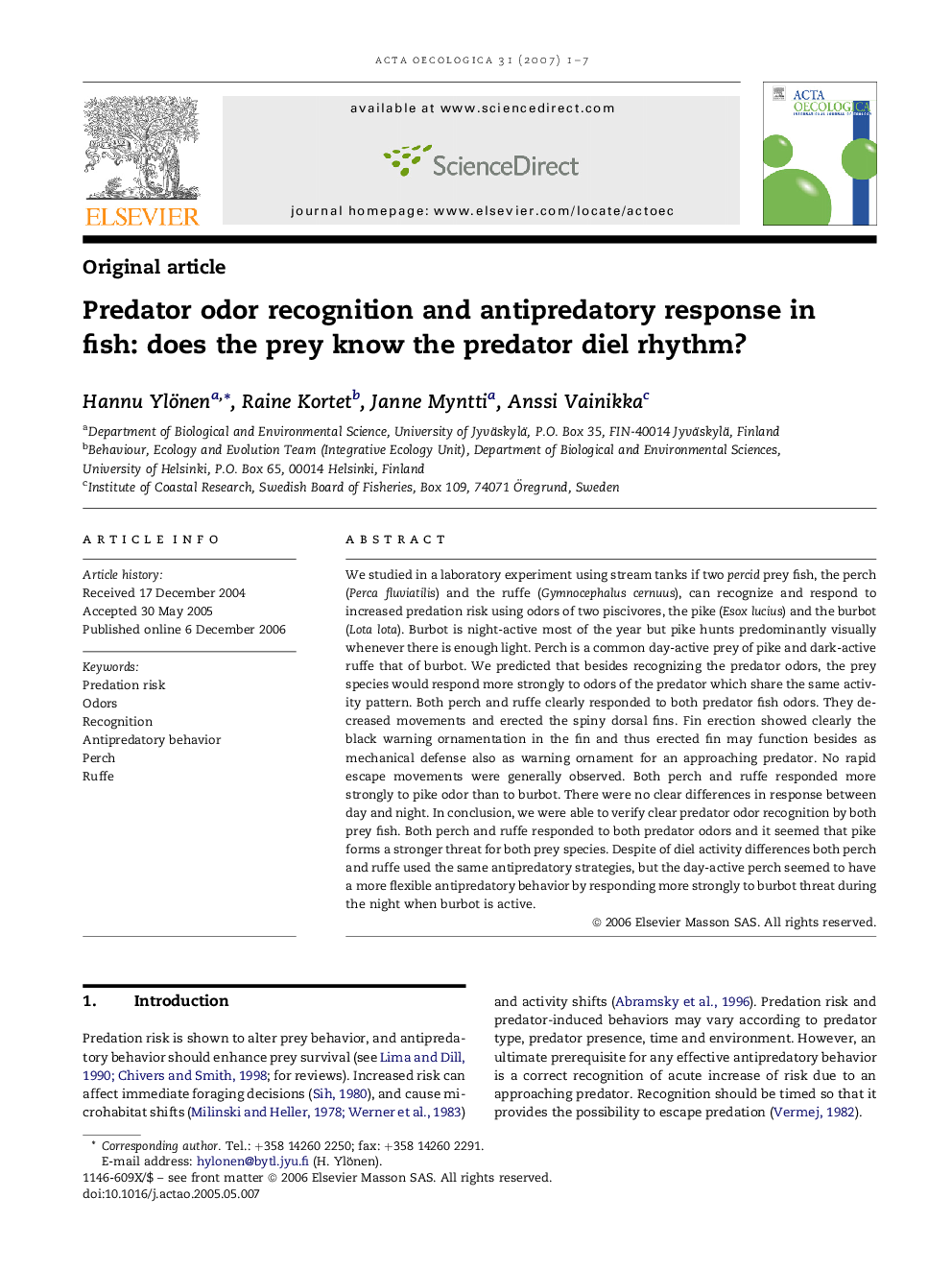| Article ID | Journal | Published Year | Pages | File Type |
|---|---|---|---|---|
| 4381727 | Acta Oecologica | 2007 | 7 Pages |
We studied in a laboratory experiment using stream tanks if two percid prey fish, the perch (Perca fluviatilis) and the ruffe (Gymnocephalus cernuus), can recognize and respond to increased predation risk using odors of two piscivores, the pike (Esox lucius) and the burbot (Lota lota). Burbot is night-active most of the year but pike hunts predominantly visually whenever there is enough light. Perch is a common day-active prey of pike and dark-active ruffe that of burbot. We predicted that besides recognizing the predator odors, the prey species would respond more strongly to odors of the predator which share the same activity pattern. Both perch and ruffe clearly responded to both predator fish odors. They decreased movements and erected the spiny dorsal fins. Fin erection showed clearly the black warning ornamentation in the fin and thus erected fin may function besides as mechanical defense also as warning ornament for an approaching predator. No rapid escape movements were generally observed. Both perch and ruffe responded more strongly to pike odor than to burbot. There were no clear differences in response between day and night. In conclusion, we were able to verify clear predator odor recognition by both prey fish. Both perch and ruffe responded to both predator odors and it seemed that pike forms a stronger threat for both prey species. Despite of diel activity differences both perch and ruffe used the same antipredatory strategies, but the day-active perch seemed to have a more flexible antipredatory behavior by responding more strongly to burbot threat during the night when burbot is active.
